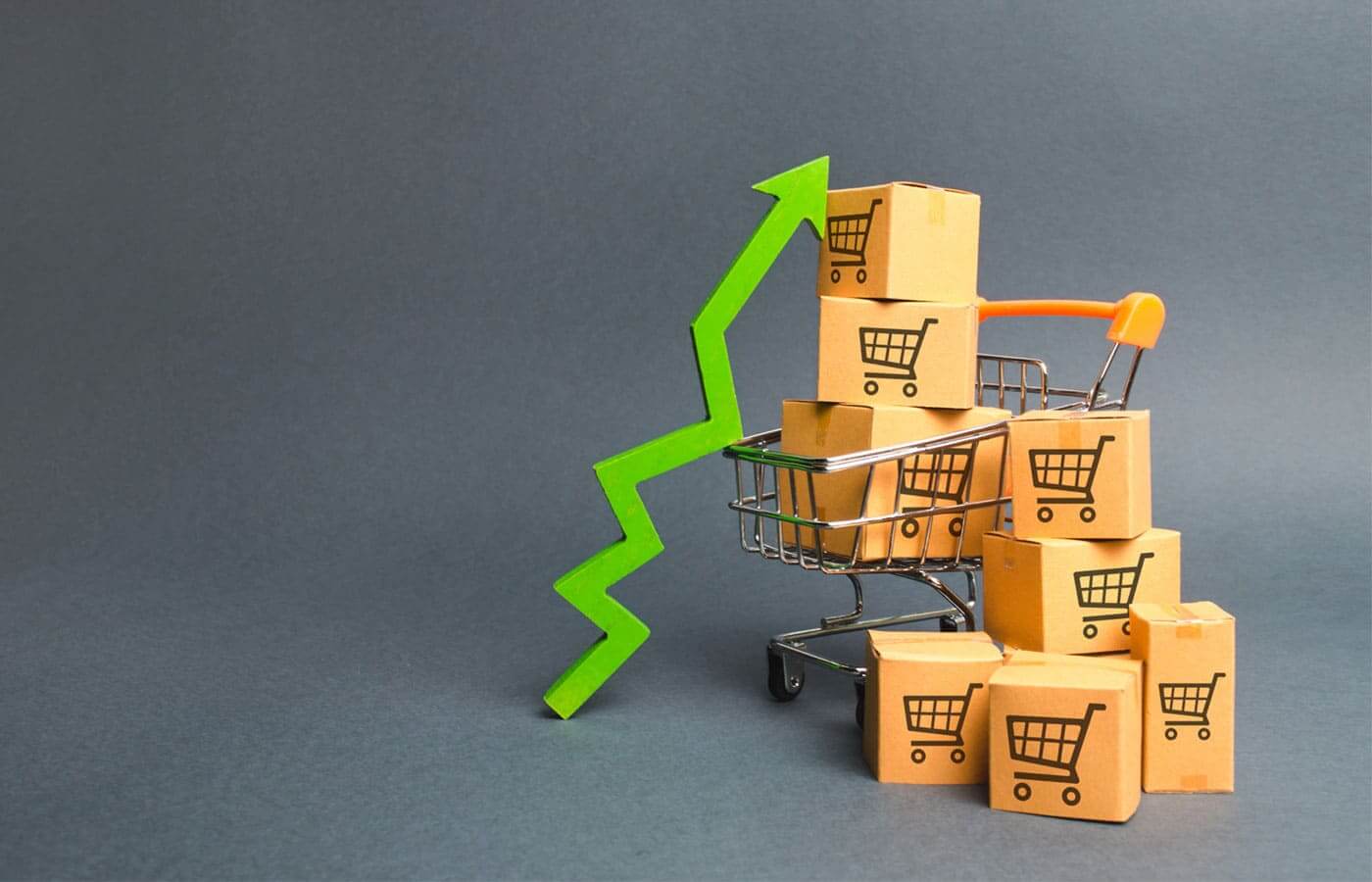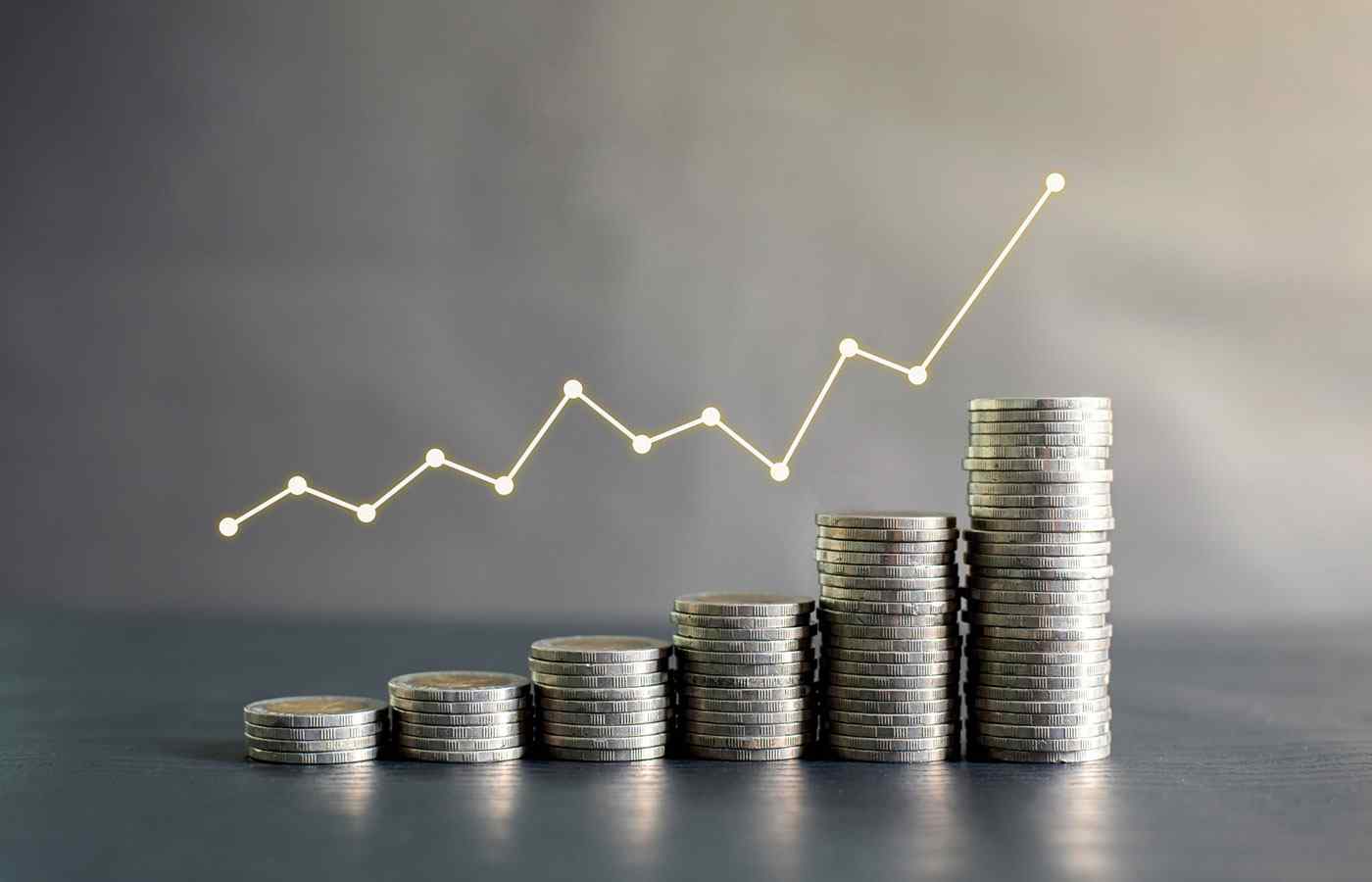Hyperinflation is when the price of goods and services spirals up and out of control, severely disrupting economic activity. This massive erosion of consumer purchasing power leads to deep recessions that can take years or even decades to resolve. While rare, there are multiple examples throughout history of countries that suffered through periods of hyperinflation.
What is hyperinflation?
Typically a central bank, like the Federal Reserve or Bank of England, targets a 2.5% annual inflation rate. Why? Because a small and steady devaluation of currency helps encourage consumers to spend money, stimulating economic growth. However, too much inflation can grind an economy to a halt – hyperinflation is an extreme example of this.
The technical definition of hyperinflation is a 50% increase in the Consumer Price Index (CPI) within a single month! Surging raw material prices cause the cost of production to skyrocket. As a result, the price of goods and services rises in line with the rising inflation, causing a massive devaluation of consumer spending power.
With household budgets becoming incredibly tight extremely quickly, hyperinflation can cause massive economic and social disruptions.
Some common examples of side effects include:
- Food shortages.
- Hoarding of goods.
- Destruction of savings.
- Surging business and personal bankruptcy levels.
- A rapid rise in poverty.
- Unemployment levels rise.
- Civil unrest.
One of the worst historical examples of hyperinflation is the post-World War 1 Germany between 1922 and 1923. The German Papiermark reached extreme levels of monthly inflation, close to 29,500%.
To put this in perspective, a loaf of bread in Berlin cost 160 Marks in 1922. By the end of 1923, the price had jumped close to 200,000,000,000 Marks. It reached a point where the money was worth less than the paper it was printed on. And people had to carry wheelbarrows full of cash to buy essential goods.
What causes hyperinflation?
Several factors under the right economic and political conditions can lead to hyperinflation.
- Excess Money Supply – During economic depressions and recessions, employment rises while access to external financing gets tighter. This usually results in a contracting economy with falling output. During these situations, a central bank may attempt to stimulate growth by increasing the money supply, encouraging banks to lend more. However, suppose economic growth continues to struggle even after large capital injections. In that case, the price of goods and services will continue to climb, resulting in more inflation and even slower economic growth. Left unchecked, this cycle repeats itself, ending in hyperinflation.
- Demand-Pull Inflation – This occurs when demand for a product or material rises ahead of the expansion of supply. With a limit on available resources, prices begin to rise, triggering inflation. In extreme situations, this can trigger hyperinflation.
- Cost-Push Inflation – Similar to demand-pull inflation, this occurs due to an imbalance in supply and demand. In this scenario, demand may remain the same while supply suffers. A disruption to supply chains or exhausted sources of resources can create rapid rises in prices leading to high inflation or even hyperinflation.
- Low Consumer Confidence – When consumers begin to lose faith in the value of their domestic currency, it’s common for hoarding to occur. This is when people buy and hold durable goods that they believe have intrinsic value. This behaviour on a countrywide basis can create shortages causing inflation to climb even higher.
Are there any advantages of hyperinflation?
As disastrous as hyperinflation is, there are a few potential advantages that last only in the short term. For example, businesses or individuals with excess amounts of existing debt may find that their loans are wiped out of existence. Why? Because the collapsing value of a currency makes this debt worthless to the loan issuer. As such, the cost of chasing down debts will be higher than the value of the debt itself.
Larger monopolistic corporations can also benefit. As smaller businesses are decimated by hyperinflation, large companies can swoop in and take over market share. Providing that the hyperinflation is fixed before the economy collapses into ruin, these companies can emerge from the chaos far larger and wealthier.
How to fix hyperinflation?
If fixing inflation is challenging, solving a hyperinflation crisis is extremely difficult. And in the past, governments have had to introduce a radical monetary policy to try and elevate currencies out of a death spiral. This includes drastic tax reforms, slashing government spending, or the outright introduction of a new or foreign currency.
The problem is decisions to contract the economy and bring down rising inflation also increase the probability and severity of a recession. Reducing the money supply will lead to even lower spending levels. Companies struggling to find customers for their products or services will begin to sack employees, causing a rise in unemployment labour statistics.
When it comes to hyperinflation, such decisions can lead to starvation and extreme poverty, potentially leading to civil disruption. Eventually, once inflation is under control, a central bank will try to re-stimulate economic activity by increasing the money supply. But if this process must be done slowly over many years. If economic growth does not follow, hyperinflation will likely come back, worsening economic conditions.
Which countries have experienced hyperinflation?
Here is the list of hyperinflationary countries, according to a report issued by IFRS purposes as of 30 June 2022.
- Argentina – The International Monetary Policy World Economic Outlook (IMF WEO) reported a 3-year cumulative rate of inflation of 216% as of December 2021.
- The Islamic Republic of Iran – The IMF WEO reported a 3-year cumulative rate of inflation of 144% as of December 2021.
- Lebanon – The IMF WEO reported a 3-year cumulative rate of inflation of 173% as of December 2020.
- South Sudan – South Sudan has been considered hyperinflationary since 2011 and continues to be hyperinflationary. The IMF WEO reported a 3-year cumulative inflation rate of 146% as of December 2021.
- Sudan – Sudan has been considered hyperinflationary since 2013 and continues to be hyperinflationary. The IMF WEO reported a 3-year cumulative rate of inflation of 2,325% as of December 2021.
The bottom line
Hyperinflation is a rare occurrence, but its effects are long-lasting. This economic depression has the power to cripple an entire country. In fact, it can even cause a complete collapse of economic activity and the monetary system itself. Therefore, preventive measures should always be intact to avoid such an occurrence.
While inflation in recent years has increased, causing concern, the current situation is far from hyperinflation. Therefore it seems unlikely for the Pound Sterling or US Dollar to experience hyperinflation in the near future.
Discover market-beating stock ideas today. Join our Premium investing service to get instant access to analyst opinions, in-depth research, our Moonshot Opportunities, and more. Learn More
This article contains general educational information only. It does not take into account the personal financial situation of the reader. Tax treatment is dependent on individual circumstances that may change in the future, and this article does not constitute any form of tax advice. Before committing to any investment decision, an investor must consider their individual financial circumstances and reach out to an independent financial advisor if necessary.





